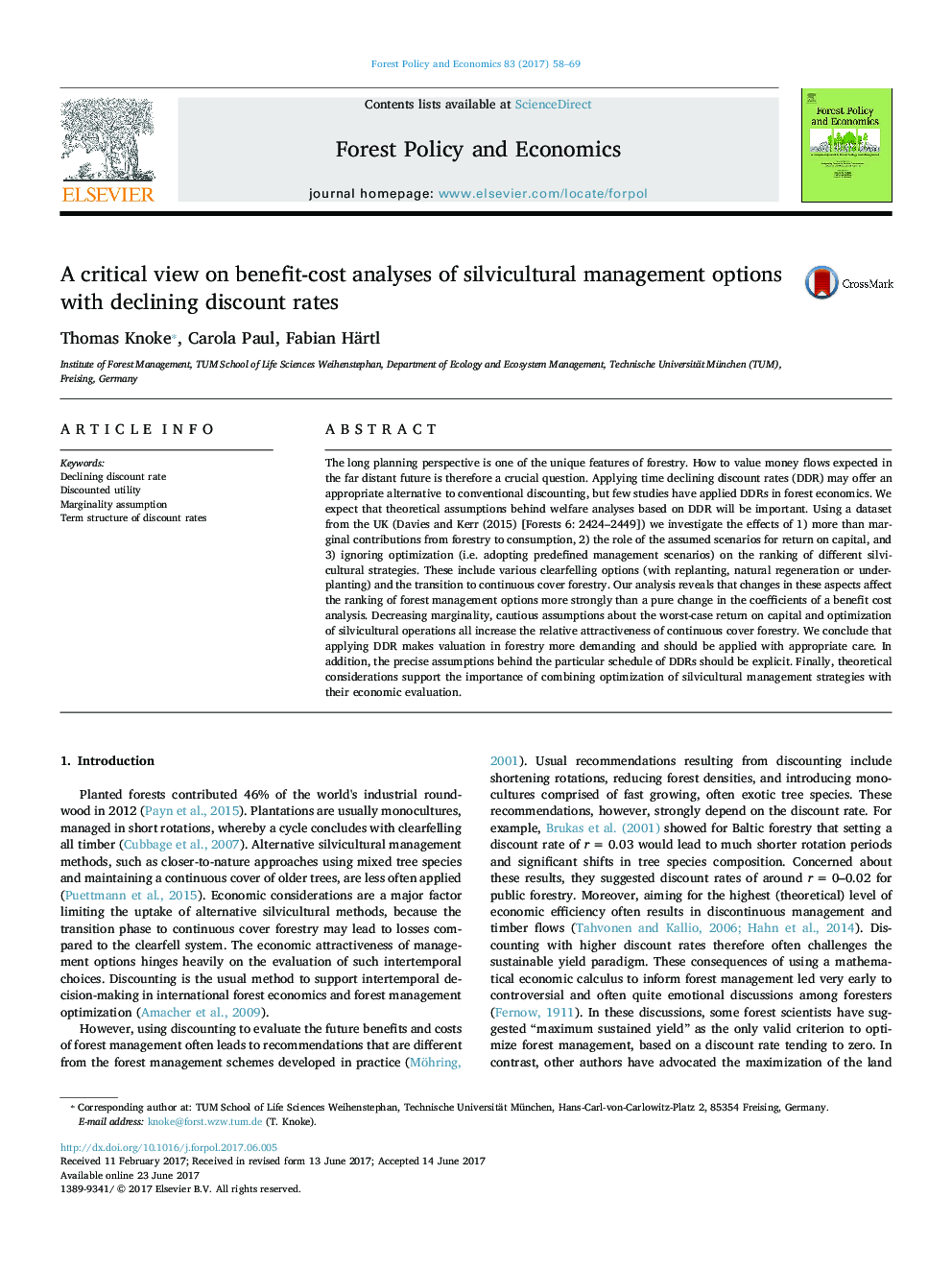| کد مقاله | کد نشریه | سال انتشار | مقاله انگلیسی | نسخه تمام متن |
|---|---|---|---|---|
| 6459668 | 1421656 | 2017 | 12 صفحه PDF | دانلود رایگان |
- The theoretical economic perspective may change the rankings fundamentally.
- Optimization has a major impact on the ranking silvicultural options
- Maximum net present value maximizes welfare only, if forestry is marginal.
- Continuous cover forestry is more competitive, if forestry is not marginal.
- Continuous cover forestry is more competitive, if cautious assumptions about economic growth are made.
The long planning perspective is one of the unique features of forestry. How to value money flows expected in the far distant future is therefore a crucial question. Applying time declining discount rates (DDR) may offer an appropriate alternative to conventional discounting, but few studies have applied DDRs in forest economics. We expect that theoretical assumptions behind welfare analyses based on DDR will be important. Using a dataset from the UK (Davies and Kerr (2015) [Forests 6: 2424-2449]) we investigate the effects of 1) more than marginal contributions from forestry to consumption, 2) the role of the assumed scenarios for return on capital, and 3) ignoring optimization (i.e. adopting predefined management scenarios) on the ranking of different silvicultural strategies. These include various clearfelling options (with replanting, natural regeneration or underplanting) and the transition to continuous cover forestry. Our analysis reveals that changes in these aspects affect the ranking of forest management options more strongly than a pure change in the coefficients of a benefit cost analysis. Decreasing marginality, cautious assumptions about the worst-case return on capital and optimization of silvicultural operations all increase the relative attractiveness of continuous cover forestry. We conclude that applying DDR makes valuation in forestry more demanding and should be applied with appropriate care. In addition, the precise assumptions behind the particular schedule of DDRs should be explicit. Finally, theoretical considerations support the importance of combining optimization of silvicultural management strategies with their economic evaluation.
Journal: Forest Policy and Economics - Volume 83, October 2017, Pages 58-69
